 Eden Gardens, India under floodlights during 2016 ICC World Twenty20 Final. | |
| Highest governing body | International Cricket Council |
|---|---|
| First played | 16th century; south-east England |
| Characteristics | |
| Contact | no |
| Team members | 11 players per side (substitutes permitted in some circumstances) |
| Mixed gender | yes, separate competitions |
| Type | team sport, bat-and-ball |
| Equipment | cricket ball, cricket bat, wicket (stumps, bails), various protective equipment |
| Venue | cricket field |
| Glossary | Glossary of cricket terms |
| Presence | |
| Country or region | worldwide but most prominent in Indian sub-continent, Australasia, British Isles, southern Africa, West Indies |
| Olympic | no (1900 Summer Olympics only) |
Cricket is a bat-and-ball game played between two teams of eleven players each on a cricket field, at the centre of which is a rectangular 20-metre (22-yard) pitch with a target at each end called the wicket (a set of three wooden stumps upon which two bails sit). Each phase of play is called an innings, during which one team bats, attempting to score as many runs as possible, whilst their opponents bowl and field, attempting to minimise the number of runs scored. When each innings ends, the teams usually swap roles for the next innings (i.e. the team that previously batted will bowl/field, and vice versa). The teams each bat for one or two innings, depending on the type of match. The winning team is the one that scores the most runs, including any extras gained. The nature of the game allows for certain results when neither team wins; a draw where a timed match has been completed with the team batting last still batting, even though one team has at that point scored more runs; a tie where both teams have scored exactly the same number of runs when the team batting last has completed its innings; and a no result where little or no play has been possible because of climatic or other conditions (usually rain or bad light ending play before the allotted balls have been completed).
Before a match begins, the two team captains meet on the pitch for the toss (of a coin), with the winner deciding which team will bat first. Two players from the batting side, and all eleven players from the bowling/fielding side, then enter the field, and play proceeds by a member of the fielding team, known as the bowler, delivering (i.e., bowling) the ball from one end of the pitch towards the wicket at the other end, which is guarded by one of the batsmen, known as the striker. The striker's role is to strike the ball well enough to score runs, if possible, while not being dismissed. The other batsman, known as the non-striker, waits at the opposite end of the pitch near the bowler. The bowling team's objectives are to prevent the scoring of runs and to dismiss the batsman. A dismissed batsman, who is declared to be "out", must leave the field to be replaced by a teammate.
The most common forms of dismissal are these: bowled, when the bowler hits the stumps directly with the ball and dislodges the bail(s); leg before wicket (lbw), when the batsman prevents the ball from hitting the stumps with his body instead of his bat; and caught, when the batsman hits the ball into the air and it is intercepted by a fielder before touching the ground.
Runs are scored by two main methods: either by hitting the ball hard enough for it to cross the boundary, or by the two batsmen swapping ends by each simultaneously running the length of the pitch in opposite directions whilst the fielders are retrieving the ball.
Adjudication is performed on the field by two umpires, aided by a Third umpire and Match referee in international matches. They communicate with two off-field scorers (one per team) who record all the match's statistical information including runs, dismissals, overs, etc.
There are various formats ranging from Twenty20, played over a few hours with each team batting for a single innings of 20 overs (i.e. 120 deliveries), to Test matches, played over five days with unlimited overs and the teams each batting for two innings of unlimited length. Traditionally cricketers play in all-white kit, but in limited overs cricket they wear club or team colours. In addition to the basic kit, some players wear protective gear to prevent injury caused by the ball, which is a hard, solid spheroid made of compressed leather with a slightly raised sewn seam enclosing a cork core which is layered with tightly wound string.
Historically, cricket's origins are uncertain and the earliest definite reference is in south-east England in the middle of the 16th century. It spread globally with the expansion of the British Empire, leading to the first international matches in the second half of the 19th century. The game's governing body is the International Cricket Council (ICC), which has over 100 members, twelve of which are full members who play Test matches. The game's rules are held in a code called the Laws of Cricket which is owned and maintained by Marylebone Cricket Club (MCC) in London.
The sport is followed primarily in the Indian subcontinent, Australasia, the United Kingdom, Ireland, southern Africa and the West Indies. Women's cricket, which is organised and played separately, has also achieved international standard. The most successful side playing international cricket is Australia, having won seven One Day International trophies, including five World Cups, more than any other country, and having been the top-rated Test side more than any other country.
Contents
History
Origins
Cricket is one of many games in the "club ball" sphere that basically involve hitting a ball with a hand-held implement; others are baseball, golf, hockey, tennis, squash, and table tennis. In cricket's case, a key difference is the existence of a solid target structure, the wicket (originally, it is thought, a "wicket gate" through which sheep were herded), that the batsman must defend. The cricket historian Harry Altham identified three "groups" of "club ball" games: the "hockey group", in which the ball is driven to and fro between two targets (the goals); the "golf group", in which the ball is driven towards an undefended target (the hole); and the "cricket group", in which "the ball is aimed at a mark (the wicket) and driven away from it".
It is generally believed that cricket originated as a children's game in the south-eastern counties of England, sometime during the medieval period. Although there are claims for prior dates, the earliest definite reference to cricket being played comes from evidence given at a court case in Guildford on Monday, 17 January 1597 (Julian calendar; equating to 30 January 1598 in the Gregorian calendar). The case concerned ownership of a certain plot of land and the court heard the testimony of a 59-year-old coroner, John Derrick, who gave witness that:
"Being a scholler in the ffree schoole of Guldeford hee and diverse of his fellows did runne and play there at creckett and other plaies".
Given Derrick's age, it was about half a century earlier when he was at school and so it is certain that cricket was being played c.1550 by boys in Surrey. The view that it was originally a children's game is reinforced by Randle Cotgrave's 1611 English-French dictionary in which he defined the noun "crosse" as "the crooked staff wherewith boys play at cricket" and the verb form "crosser" as "to play at cricket".
One possible source for the sport's name is the Old English word "cryce" (or "cricc") meaning a crutch or staff. In Samuel Johnson's Dictionary, he derived cricket from "cryce, Saxon, a stick". In Old French, the word "criquet" seems to have meant a kind of club or stick. Given the strong medieval trade connections between south-east England and the County of Flanders when the latter belonged to the Duchy of Burgundy, the name may have been derived from the Middle Dutch (in use in Flanders at the time) "krick"(-e), meaning a stick (crook). Another possible source is the Middle Dutch word "krickstoel", meaning a long low stool used for kneeling in church and which resembled the long low wicket with two stumps used in early cricket. According to Heiner Gillmeister, a European language expert of Bonn University, "cricket" derives from the Middle Dutch phrase for hockey, met de (krik ket)sen (i.e., "with the stick chase"). Gillmeister has suggested that not only the name but also the sport itself may be of Flemish origin.
Growth of amateur and professional cricket in England
Although the main object of the game has always been to score the most runs, the early form of cricket differed from the modern game in certain key technical aspects. The ball was bowled underarm by the bowler and all along the ground towards a batsman armed with a bat that, in shape, resembled a hockey stick; the batsman defended a low, two-stump wicket; and runs were called "notches" because the scorers recorded them by notching tally sticks.
In 1611, the year Cotgrave's dictionary was published, ecclesiastical court records at Sidlesham in Sussex state that two parishioners, Bartholomew Wyatt and Richard Latter, failed to attend church on Easter Sunday because they were playing cricket. They were fined 12d each and ordered to do penance. This is the earliest mention of adult participation in cricket and it was around the same time that the earliest known organised inter-parish or village match was played – at Chevening, Kent. In 1624, a player called Jasper Vinall died after he was accidentally struck on the head during a match between two parish teams in Sussex.
Cricket remained a low-key local pursuit for much of the century. It is known, through numerous references found in the records of ecclesiastical court cases, to have been proscribed at times by the Puritans before and during the Commonwealth. The problem was nearly always the issue of Sunday play as the Puritans considered cricket to be "profane" if played on the Sabbath, especially if large crowds and/or gambling were involved.
According to the social historian Derek Birley, there was a "great upsurge of sport after the Restoration" in 1660. Gambling on sport became a problem significant enough for Parliament to pass the 1664 Gambling Act, limiting stakes to £100 which was in any case a colossal sum exceeding the annual income of 99% of the population. Along with prizefighting, horse racing and blood sports, cricket was perceived to be a gambling sport. Rich patrons made matches for high stakes, forming teams in which they engaged the first professional players. By the end of the century, cricket had developed into a major sport which was spreading throughout England and was already being taken abroad by English mariners and colonisers – the earliest reference to cricket overseas is dated 1676. A 1697 newspaper report survives of "a great cricket match" played in Sussex "for fifty guineas apiece" – this is the earliest known reference to an important match.
The patrons, and other players from the social class known as the "gentry", began to classify themselves as "amateurs" to establish a clear distinction vis-à-vis the professionals, who were invariably members of the working class, even to the point of having separate changing and dining facilities. The gentry, including such high-ranking nobles as the Dukes of Richmond, exerted their honour code of noblesse oblige to claim rights of leadership in any sporting contests they took part in, especially as it was necessary for them to play alongside their "social inferiors" if they were to win their bets. In time, a perception took hold that the typical amateur who played in first-class cricket, until 1962 when amateurism was abolished, was someone with a public school education who had then gone to one of Cambridge or Oxford University – society insisted that such people were "officers and gentlemen" whose destiny was to provide leadership. In a purely financial sense, the cricketing amateur would theoretically claim expenses for playing while his professional counterpart played under contract and was paid a wage or match fee; in practice, many amateurs claimed somewhat more than actual expenditure and the derisive term "shamateur" was coined to describe the syndrome.
English cricket in the 18th and 19th centuries
Watch movie Cricketer online on Amazon
Watch movie Cricketer online
Watch The Movie On PrimeSalakhen (1975) Full HD Movie Download
.jpg)
Kites Full HD Movie Download

Do Anjaane Full HD Movie Download

Bhagyawan Full HD Movie Download
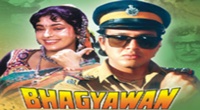
Prem Aggan Full HD Movie Download

Hum Hain Kamal Ke Full HD Movie Download
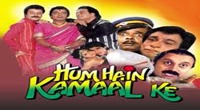
Hostel Full HD Movie Download
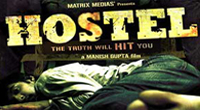
Ganga Aur Suraj Full HD Movie Download

Aakhri Dao (1975) Full HD Movie Download
.jpg)
Bhairavi (1996) Full HD Movie Download
.jpg)
Julie (1975) Full HD Movie Download
.jpg)
Khazana (1987) Full HD Movie Download
.jpg)
Beti (1969) Full HD Movie Download
.jpg)
Aandhi Toofan (1985) Full HD Movie Download
.jpg)
Bhayankara Phichisi Full HD Movie Download
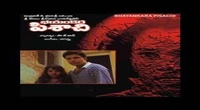
Kelviyum Naane Pathilum Naane Full HD Movie Download

Raaga Deepam Full HD Movie Download
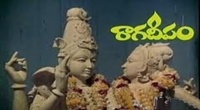
Embryo Full HD Movie Download

Steamboat Bill Jr. Full HD Movie Download
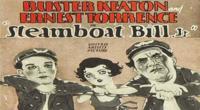
Edutha Sabatham Mudipen Full HD Movie Download

Bangaru Chilaka Full HD Movie Download
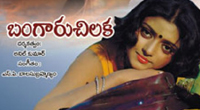
Download latest Movie from bollywood
- 1> baaghi 3
- 2> THE SKY IS PINK MOVIE FULL STORY AND REVIEW
- 3> Luka Chuppi
- 4> TO ALL THE BOYS I’VE LOVED BEFORE
- 5> Kabir Singh
- 6> Street Dancer 3D
- 7> Simmba
- 8> Gone Girl
- 9> The Girl Who Lived
- 10> Ludo
- 11> DILWALE DULHANIA LE JAYENGE
- 12> GUILTY
- 13> The Godfather
- 14> Adventures of Rusty
- 15> Sooryavanshi
- 16> Satyameva Jayate 2
- 17> Thappad
- 18> Bhool Bhulaiyaa 2
- 19> KGFChapter 2
- 20> Mardaani 2
- 21> Pinjar
- 22> Shivaji maharaj
- 23> Ek Villian 2
- 24> Hungama 2
- 25> Divergent
- 26> Mumbai Saga
- 27> The Internship
- 28> HIT (telugu)
- 29> Panga
- 30> The perfect date
- 31> 16 December
- 32> Gopala Gopala (Telugu)
- 33> Brahmastra
- 34> Gangubai Kathiawadi
- 35> Manmadhudu
- 36> Nenu local
- 37> Mahanati
- 38> Shatamanam bavathi
- 39> Lagaan
- 40> After
- 41> MOM
- 42> Shamshera
- 43> Raguvaran BTech
- 44> Khakee
- 45> The villain
- 46> OM
- 47> Mr. perfect
- 48> Bueatifull mind
- 49> Hichki
- 50> Gabbar Singh
- 51> Jogi
- 52> Before Sunrise
- 53> Before Sunset
- 54> Before Midnight
- 55> The Big Bull
- 56> Top Gun: Maverick
- 57> The Purge
- 58> The Sky is Pink
- 59> Laxmmi Bomb
- 60> Sadak 2
- 61> Sufna
- 62> Prithviraj
- 63> PK
- 64> Coolie No 1(2020)
- 65> Black Widow
- 66> Dear Zindagi
- 67> Dil Bechara
- 68> PHIR HERA PHERI
- 69> WAR
- 70> Dostana
- 71> RRR: Roudram Ranam Rudhiram
- 72> Maidan
- 73> Dabbang 3
- 74> Chhalaang
- 75> life as we know it
- 76> SherShaah
- 77> Sandeep Aur Pinky Faraar
- 78> Event Horizon
- 79> 83
- 80> Radhe: Your Most Wanted Bhai
- 81> Gunjan Saxena: The Kargil Girl
- 82> Mr India
- 83> Vivah
- 84> Anokha Bandhan
- 85> Ghost
- 86> Bhoot: Part One - The Haunted Ship
- 87> Haseen Dilruba
- 88> Laal Singh Chaddha
- 89> Qismat
- 90> Rajput
- 91> Drive
- 92> Dil Chahta Hai
- 93> Dil Ki Baazi
- 94> Dil Ka Rishta
- 95> Teesri Manzil
- 96> Dil
- 97> Love Aaj Kal
- 98> Khaali Peeli
- 99> Bunty Aur Babli 2
- 100> Atrangi Re
- 101> Gulabo Sitabo
- 102> Jodi
- 103> Suraj Pe Mangal Bhari
- 104> Deewana
- 105> Attack
- 106> Sardar Udham Singh
- 107> Toofan
- 108> THE LOVEBIRDS
- 109> Jersey
- 110> Ginny Weds Sunny
- 111> Thalaivi
- 112> Shiddat
- 113> Angels vs Zombies
- 114> Koi Mil Gya
- 115> Thank God
- 116> Bhuj: The Pride of India
- 117> Hum Aapke Hain Kaun
- 118> The Platform
- 119> Bird Box
- 120> Roohi Afzana
- 121> Torbaaz
- 122> Nikamma
- 123> World War Z
- 124> Extraction
- 125> Train to Busan
- 126> Life of Pi
- 127> SHAADI MEIN JROOR AANA
- 128> Himmat Aur Mehnat
- 129> To All The Boys: P.S. I Still Love You
- 130> Mimi
- 131> Good Newwz
- 132> Shubh Mangal Zyada Saavdhan
- 133> Raabta
- 134> Harry Potter and the Philosopher's Stone
- 135> Harry Potter and the Chamber of Secrets
- 136> Chhapaak
- 137> War of the Worlds
- 138> Harry Potter and the Prisoner of Azkaban
- 139> Harry Potter and the Goblet of Fire
- 140> MURDER MYSTERY
- 141> Shakuntala Devi
- 142> Bachchan Pandey
- 143> Jayeshbhai Jordar
- 144> Sheer Qorma
- 145> Saina
- 146> 'O' Pushpa I hate tears
- 147> Kedarnath
- 148> MS Dhoni The Untold Story
- 149> Chhichhore
- 150> Badhaai Ho
- 151> Unstoppable
- 152> Oz the Great And Powerful
- 153> The Girl on the Train
- 154> Haathi Mere Saathi 2020
- 155> The Conjuring: The Devil Made Me Do It
- 156> Gandhi Se Pehle Gandhi
- 157> The Song of Scorpions
- 158> Srimanthudu
- 159> Hello Guru Prema Kosame
- 160> Beauty and The Beast
- 161> Black Panther
- 162> Charlie and the Chocolate Factory
- 163> Bole Chudiyan
- 164> Fidaa
- 165> Duvvada Jagannadham
- 166> Bruce Lee: The Fighter
- 167> Hyper
- 168> Yaara
- 169> Red (2020)
- 170> Shivam
- 171> That Is Mahalakshmi
- 172> Nishabdham
- 173> Aashram 2020 web series
- 174> Laxmii
- 175> Mismatched
- 176> STUDENT OF THE YEAR 2
- 177> NAIL POLISH
- 178> Ramprasad Ki Tehrvi
- 179> KAAGAZ
- 180> 12 o Clock
- 181> The Power
- 182> bolo hau
- 183> Tribhanga
- 184> JAMUN
- 185> Madam Chief Minister
- 186> Maasaab
- 187> Aadhaar
- 188> Tanhaji
- 189> Bhaagi 3
- 190> Bhootnath
- 191> MALANG
- 192> Jai Mummy Di
- 193> Haathi Mere Saathi 2021
- 194> Shakeela
- 195> Unpaused
- 196> Annayya
- 197> Vamsoddharakudu
- 198> Mrugaraju
- 199> Narasimha Naidu
- 200> Sankranti
- 201> Manasu Maata Vinadhu
- 202> Anjaane
- 203> Apaharan
- 204> Bachke Rehna Re Baba
- 205> Bewafaa
- 206> Roohi
- 207> Radhe
- 208> Zindagi Khoobsoorat Hai
- 209> Yeh Mohabbat Hai
- 210> Yeh Kya Ho Raha Hai?
- 211> The Tomorrow War
- 212> DehradunDiary
- 213> Meri Shaadi Karaoo
- 214> Matruu Ki Bijlee Ka Mandola
- 215> No One Killed Jesica
- 216> Aag Ka Goola
- 217> Eight Million Dollars
- 218> Three Hundred
- 219> Cats and Dog
- 220> Decoy
- 221> Gold Rush
- 222> You Have Got Mail
- 223> Final Destination three
- 224> Tofan
- 225> Jungle
Request for Download movie Cricketer
- Bollywood movies
- Latest Bollywood movies
- Download all bengali movies
- Download all bhojpuri movies
- Download all english movies
- Download all gujarati movies
- Download all hindi movies
- Download all kannada movies
- Download all malayalam movies
- Download all marathi movies
- Download all oriya movies
- Download all punjabi movies
- Download all tamil movies
- Download all telugu movies
- Bollywood action movies
- Bollywood adventure movies
- Bollywood animation movies
- Bollywood classical movies
- Bollywood comedy movies
- Bollywood crime movies
- Bollywood devotional movies
- Bollywood documentary movies
- Bollywood drama movies
- Bollywood family movies
- Bollywood fantasy movies
- Bollywood historical movies
- Bollywood history movies
- Bollywood horror movies
- Bollywood musical movies
- Bollywood mystery movies
- Bollywood mythological movies
- Bollywood patriotic movies
- Bollywood romance movies
- Bollywood romantic movies
- Bollywood sci-fi movies
- Bollywood social movies
- Bollywood spiritual movies
- Bollywood sports movies
- Bollywood suspense movies
- Bollywood thriller movies
- Bollywood war movies
- Hot actress list
- Hot gujarati actress list
- Hot tamil actress list
- Hot bhojpuri actress list
- Hot assam actress list
- Hot bihari actress list
- Hot jammu and kashmir actress list
- Hot gujarati actress list
- Hot haryana actress list
- Hot konkani actress list
- Hot marathi actress list
- Hot odia actress list
- Hot punjabi actress list
- Hot rajasthani actress list
- Hot kannada actress list
- Hot malayalam actress list
- Hot telugu actress list
- Hot tulu actress list
- Hot Actress list from Indian city
- Hot actress list from ahmedabad
- Hot actress list from alappuzha
- Hot actress list from bangalore
- Hot actress list from bangalore
- Hot actress list from bhopal
- Hot actress list from chandigarh
- Hot actress list from chennai
- Hot actress list from guwahati
- Hot actress list from hyderabad, india
- Hot actress list from indore
- Hot actress list from jaipur
- Hot actress list from kannur
- Hot actress list from kochi
- Hot actress list from kolkata
- Hot actress list from kollam
- Hot actress list from kottayam
- Hot actress list from kozhikode
- Hot actress list from lucknow
- Hot actress list from madurai
- Hot actress list from mangalore
- Hot actress list from mumbai
- Hot actress list from mysore
- Hot actress list from new delhi
- Hot actress list from patna
- Hot actress list from pune
- Hot actress list from thiruvananthapuram
- Hot actress list from thrissur
- Hot actress list from tiruchirappalli
- Hot actress list from vijayawada
- Hot actress list from visakhapatnam
- All Bollywood Movies
- Bollywood Celeb
- >Art Director
- >Audiography
- >Background Music
- >Banner
- >Choreographer
- >Cinematographer
- >Costume Designer
- >Dialogue Writer
- >Director
- >Distributor
- >Editor
- >Executive Producer
- >Hair Stylist
- >Lyricist
- >Music Director
- >Photographer
- >Playback Singers
- >Presenter
- >Producer
- >Production Company
- >Production Designer
- >Screenplay
- >Singer
- >Sound
- >Actor
- >Story Writer
- >Studio
- >Video Director
- >Miscellaneous
- >Publicity (pro)
- >Web Creator
- >Production Labs
- >Publicity Design
- >Publicity Stills
- >Writer
- >Miscellaneous Artists
- >Visual Effects
- >Reporter
- >Music Company
- >Shooting Studios
- >Picturised On
- >Line Producer
- >Co Producer
- >Asst Director
- >Casting Director
- >Cinematography
- >Choreography
- >Dialouge
- >Editing
- >Lyrics
- >Music
- >Story
- >Playback Singer Female
- >Playback Singer Male
- >Actor In A Comic Role (male/female)
- >Child Artiste
- >Ensemble Cast
- >Actor Popular Choice (male)
- >Actor Popular Choice (female)
- >Sa Re Ga Ma Pa Song Of The Year
- >Actor In Supporting Role
- >Actress In Supporting Role
- >Actor In Leading Role
- >Art Direction
- >Actress In Leading Role
- >Sound Recording
- >Costume Design
- >Special Effects
- >Action
- >Actor In A Negative Role
- >Lifetime Achievement Award
- >Cinematic Exellence (director)
- >Cinematic Exellence (male)
- >Cinematic Exellence (female)
- >International Male Icon
- >International Female Icon
- >Actor In A Supporting Role (male)
- >Actor In A Supporting Role (female)
- >Actor In A Comic Role
- >Playback Singer (male)
- >Playback Singer (female)
- >Most Promising Debut (female)
- >Most Promising Debut (male)
- >Most Promising Director
- >Sound Design
- >Lifetime Jodi
- >Marketed Film
- >Jury Award For Best Actor
- >Jury Award For Best Actress
- >Jury Award For Best Film
- >Jury Award For Best Director
- >Playback Singer(male)
- >Lifetime Acheivement Award (male)
- >Excellence Award
- >Jodi Award
- >Performer Of The Year
- >Presented By
